- Home
- Terry Pratchett
The Science of Discworld III - Darwin's Watch tsod-3 Page 4
The Science of Discworld III - Darwin's Watch tsod-3 Read online
Page 4
In short, Paley's logic is heavily biased by what a human being would know about a watch and its maker. And his analogy breaks down when we consider other features of watches. If it doesn't even work for watches, which we do understand, there's no reason for it to apply to organisms, which we don't.
He is also rather unfair to stones.
Some of the oldest rocks in the world are found in Greenland, in a 25-mile-long band known as the Isua supracrustal belt. They are the oldest known rocks among those that have been laid down on the surface of the Earth, instead of rising from the mantle below. They are 3.8 billion years old, unless we cannot reliably make inferences from observations, in which case the evidence for cosmic design has to be thrown out along with the evidence of the rocks. We know their age because they contain tiny crystals of zircon. We mention them here because they show that Paley's lack of interest in `stones', and his casual acceptance that they might have `lain there forever', are unjustified. The structure of a stone is nowhere near as simple as Paley assumed. In fact, it can be just as intricate as an organism, though not as obviously `organised'. Every stone has a story to tell.
Zircons are a case in point.
Zirconium is the 40th element in the periodic table, and zircon is zirconium sulphate. It occurs in many rocks, but usually in such tiny amounts that its presence is ignored. It is extremely hard - not as hard as diamond, but harder than the hardest steel. Jewellers sometimes use it as a diamond substitute.
Zircons, then, are found in most rocks, but in this instance the important rock is granite. Granite is an igneous rock, which wells up from the molten layers beneath the Earth's crust, forcing a path through the overlying sedimentary rock that has been deposited by wind or water. Zircons form in granite that solidifies about 12 miles (20 km) down inside the Earth. The crystals are truly tiny: one 10,000th of an inch (2 microns) is typical.
Over the last few decades we have learned that our apparently stable planet is highly dynamic, with continents that wander around over the surface, carried by gigantic `tectonic plates' which are 60 miles (100 km) thick and float on the liquid mantle. Sometimes they even crash into each other. They move less than an inch (about 2 cm) per year, on average, and on a geological timescale that's fast.
The north-west of Scotland was once part of North America, when the North American plate collided with the Eurasian plate; when the plates later split apart, a piece of America was left behind, forming the Moine thrust. When plates collide, they slide over each other, often creating mountains. The highest mountains on Earth today, the Himalayas, formed when India collided with the Asian mainland. They are still rising today by more than half an inch (1.3 cm) a year, though are often weathered away faster, and India is still moving northwards.
At any rate, granite deep within the Earth may be uplifted by the collision of continental plates, to appear at the surface as part of a mountain range. Being a hard rock, it survives when the softer sedimentary rocks that surround it weather away. But eventually, even granite weathers, so the mountain erodes. The zircon crystals are even harder, so they survive weathering; they separate out from the granite, to be washed down to the coast by streams and rivers, deposited on the sandy shore, and incorporated into the next layer of sedimentary rock.
As well as being very hard, zircon is chemically very stable, and it resists most chemical changes. So, as the sediment builds up, and the zircon crystal is buried under accumulating quantities of incipient rock, the crystal is relatively immune to the increasing heat and pressure. Even when the rock is cooked by deep heat, becoming metamorphic - changing its chemical structure - the crystal of zircon survives. Its one concession to the extreme environment around it is that eventually it builds a new layer, like a skin, on its surface. This `rim', as it is called, is roughly the same age as the surrounding rock; the inner core is far older.
Now the process may repeat. The core of zircon, with its new rim, may be pushed up with the surrounding rocks to make a new mountain range. When those mountains weather, the zircon may return to the depths, to acquire a second rim. Then a third, a fourth ... Just as tree rings indicate the growth of a tree, so `zircon rims' reflect a sequence of mountain-building and erosion. The main difference is that each ring on a tree corresponds to a period of one year, whereas the rims on the tiny zircon crystal correspond to geological cycles that typically last hundreds of millions of years. But, just as the widths of tree rings tell us something about the climate in the years that are represented, so the zircon rims tell us something about the conditions that occurred during a given geological cycle.
By one of those neat coincidences that Paley would interpret as the Hand of God but nowadays we recognise as an inevitable consequence of the sheer richness of the universe (yes, we do see that those statements might be the same), the zirconium atom has the same electric charge, and is much the same size, as an atom of uranium. So uranium impurities can easily sneak into that zircon crystal. This is good for science, because uranium is radioactive. Over time, it decays into lead. If we measure the ratio of uranium to lead then we can estimate the time that has elapsed since any given part of the zircon crystal was laid down. Now we have a powerful observational tool, a geological stopwatch. And we also have a simple prediction that gives us confidence in the hypothesis that the zircon crystal forms in successive stages. Namely, the core should be the oldest part of the crystal, and successive rims should become consistently younger, in separate stages.
A typical crystal might have, say, four layers. The core might date to 3.7 billion years ago, the next to 3.6 billion years, the third to 2.6 billion years, and the last one to 2.3 billion years. So here, in a simple `stone', we have evidence for geological cycles that last between 100 million and one billion years. The order of the ages agrees with the order in which the crystal must have been deposited. If the general scenario envisaged by geologists were wrong, then it would take only a single grain of sand to disprove it. Of course that doesn't confirm the huge geological cycles: those are deduced from other evidence. Science is a crossword puzzle.
Zircons can teach us more. It is thought that the ratio of two isotopes of carbon, carbon-12 and carbon-13, may distinguish organic sources of carbon from inorganic ones. There is carbon in the Isua formation, and the ratio there suggests that life may have existed 3.8 billion years ago, surprisingly soon after the Earth's surface solidified. But this conclusion is controversial, and many scientists are not convinced that other explanations can be excluded.
At any rate, for the Isua zircons we know that it is not an option for them to have `lain there for ever'. Stones are far more interesting than they might seem, and anyone who knows how to read the rocks can deduce many things about their history. Paley believed that he could deduce the existence of God from the complexity of an eye. We can't get God from a zircon, but we can get vast geological cycles of mountain-building and erosion ... and just possibly, evidence for exceedingly ancient life.
Never underestimate the humble stone. It may be a watch in disguise.
Paley's position is that what you see is what you get. The appearance is the reality. His title Natural Theology says as much, and his subtitle could scarcely be plainer. Organisms look designed because they are designed, by God; they appear to have a purpose because they do have a purpose: God's. Everywhere Paley looked, he saw traces of God's handiwork; everything around him was evidence for the Creator.
That kind of `evidence' exists in such abundance that there is no difficulty in accumulating examples. Paley's central example was the eye. He noted its similarity to a telescope, and deduced that since a telescope is designed, so must an eye be. The camera did not exist in his day[10], but if it had existed, he would have found even closer similarities. The eye, like a telescope or a camera, has a lens to bring incoming light to a sharp focus, forming an image. The eye has a retina to receive that image, just as a telescope has an observer, or a screen on to which the image is projected.
The lens of
the eye is useless without the retina; the retina is useless without the lens. You can't put an eye together piecemeal - you need all of it, at once, or it can't work. Later supporters of theist explanations of life turned Paley's subtle arguments into a simplistic slogan: `What use is half an eye?'
One reason to doubt Paley's explanation of `design' is that in science, you very seldom get what you see. Nature is far from obvious. The waves on the ocean may seem to be travelling, but the water is mainly going round and round in tiny circles. (If it wasn't, the land would quickly be swamped.) The Sun may appear to orbit the Earth, but actually it's the other way round. Mountains, apparently solid and stable, rise and fall over geological timescales. Continents move. Stars explode. So the explanation `it appears designed because it is designed' is a bit too trite, a bit too obvious, a bit too shallow. That doesn't prove it's wrong, but it gives us pause.
Darwin was one of a select group of people who realised that there might be an alternative. Instead of some cosmic designer creating the impressive organisation of organisms, that organisation might come into being of its own accord. Or, more accurately, as an inevitable consequence of the physical nature of life, and its interactions with its environment. Living creatures, Darwin suggested, are not the product of design, but of what we now call `evolution' - a process of slow, incremental change, almost imperceptible from one generation to the next, but capable of accumulating over extensive periods of time. Evolution is a consequence of three things. One is the ability of living creatures to pass on some of their attributes to their offspring. The second is the slightly hit-and-miss nature of that ability: what they pass on is seldom a precise copy, though it usually comes close. The third is `natural selection'- creatures that are better at survival are the ones that manage to breed, and pass on their survival attributes.
Natural selection is slow.
As an accomplished student of geology - Victorian-style field geology, where you traipse about the landscape trying to work out what rocks lie under your feet, or halfway up the next mountain, and how they got there - Darwin was well aware of the sheer abyssal depth of geological time. The record of the rocks offered compelling evidence that the Earth must be very, very old indeed: tens or hundreds of millions of years, maybe more. Today's figure of 4.5 billion years is even longer than the Victorian geologists dared imagine, but probably would not have surprised them.
Even a few million years is a very long time. Small changes can turn into huge ones over such a period of time. Imagine a species of worm four inches (10 cm) long, whose length increases by one thousandth of a per cent every year, so that even very accurate measurements would not detect any change on a yearly basis. In a hundred million years, the descendants of that worm would be 30 feet (10 m) long. From annelid to anaconda. The longest worm alive today sometimes reaches lengths of 150 feet (50m), but it is a marine worm: Lineus longissimus, which lives in the North Sea and can be found under boulders at low tide. Earthworms are a lot shorter, but the Megascolecid worms of Australia can grow to a length of 10 feet (3m), which is still impressive.
We're not suggesting that evolution happens with quite that degree of simplicity or regularity, but there's no question that geological time allows huge changes to occur by imperceptible steps. In fact, most evolutionary changes are a lot faster. Observations of `Darwin's finches', 13 species of bird that inhabit the Galapagos Islands, reveal measurable changes from one year to the next - for example, in the average sizes of the birds' beaks.
If we want to explain the rich panoply of life on Earth, it is not enough to observe that living creatures can change as the generations pass. There must also be something that drives those changes in a `creative' direction. The only driving force that Paley could imagine was God, making conscious, intelligent choices and designing them in from the beginning. Darwin was more acutely aware that organisms can and do change from each generation to the next. Both the fossil record and his experience with the breeding of new varieties of plants and domestic animals made that fact plain. But breeding is also a choice imposed from outside, by the breeder, so if anything, domestic animals look like evidence in favour of Paley.
On the other hand, no human agency ever bred dinosaurs. Does that imply that the agency was God - or did the dinosaurs somehow breed themselves into new forms? Darwin realised that there is another kind of `choice', imposed not by intelligent will but by circumstance and context. This is `natural selection'. In the vast, ongoing competition for food, living space, and the opportunity to breed, nature will automatically favour winners over losers. Competition introduces a kind of ratchet, which mostly moves in one direction: towards whatever works better. So we should not be surprised that tiny incremental changes from one generation to the next should possess some sort of overall `direction', or dynamic, with changes accumulating coherently across the aeons to produce something entirely different.
This kind of description is easily misunderstood as a kind of inbuilt tendency towards 'progress'- ever onwards, ever upwards. Ever more complex. Many Victorians took the message that the purpose of evolution was to bring humanity into being. We are the highest form of creation, we are at the top of the evolutionary tree. With us, evolution has arrived; it will now stop, having achieved its ultimate goal.
Rubbish. `Works better' is not an absolute statement. It applies in a context that is itself changing. What works better today might not do so in a million years' time - or even tomorrow. Maybe for a time, a bird's beak will `work better' if it is bigger and stronger. If so, that's how it will change. Not because the birds know what kind of beak will work better: because the kind of beak that works better is the kind that survives more effectively and is therefore more likely to be inherited by succeeding generations. But the results of the competition may change the rules of the game, so that later on, big beaks may become a disadvantage; for instance, suitable food may disappear. So now smaller beaks will win.
In short, the dynamic of evolution is not prescribed in advance: it is `emergent'. It creates its own context, and reacts to that context, as it proceeds. So at any given time we expect to find some sensible directionality to evolutionary change, consistent over many generations, but often the universe itself only finds out what that direction is by exploring what's possible and discovering what works. Over a longer timescale, the direction itself can change. It's like a river that flows through an eroding landscape: at any given time there is a clear direction to the flow, but in the long run the passage of the river can slowly change its own course.
It is also important to appreciate that individual organisms do not compete in isolation, or against a fixed background. Billions of competitions go on all the time, and their outcome may be affected by the results of other competitions. It's not like the Olympics, where the javelin-throwers politely wait for the marathon-runners to stream past. It's more like a version of the Olympics where the javelinthrowers try to spear as many marathon-runners as they can, while the steeplechasers are trying to steal their javelins to turn each hurdle into a miniature pole vault, and the marathon-runners' main aim in life is to drink the water-jump before the steeplechasers get to it and drink it first. This is the Evolympics, where everything happens at once.
The evolutionary competitions, and their outcomes, also depend on context. Climate, in particular, plays a big role. In the Galapagos, selection for beak size in Darwin's finches depends on how many birds have what size of beak, and on what kinds of food - seeds, insects, cactus - are available and in what quantities. The amount and type of food depend on which plants and insects are competing best in the struggle to survive - not least from being eaten by finches - and breed. And all of this is played out against a background of climatic variations: wet or dry summers, wet or dry winters. Observations published in 2002 by Peter and Rosemary Grant show that the main unpredictable feature of finch evolution in the Galapagos is climate. If we could forecast the climate accurately, we could predict how the finches would evolve. But we can'
t predict the climate well enough, and there are reasons to think that this may never be possible.
That doesn't prevent evolution from being `predictive', hence a science, any more than it prevents meteorology from being a science. But the evolutionary predictions are contingent upon the behaviour of the climate. They predict what will happen in what circumstances, not when it will happen.
Darwin almost certainly read Paley's masterwork as a young man, and in later life he may well have used it as a touchstone for his own, more radical and far more indirect, views. Paley succinctly expressed many of the most effective objections to Darwin's ideas, long before Darwin arrived at them. Intellectual honesty demanded that Darwin should find convincing answers to Paley. Such answers are scattered throughout Darwin's epic treatise The Origin of Species, though Paley's name does not appear.
In particular, Darwin found it necessary to tackle the thorny question of the eye. His answer was that although the human eye appears to be a perfected mechanism, with many interdependent parts, there are plenty of different `eyes' in the animal kingdom, and a lot of those are relatively rudimentary. They can even be arranged in a rough progression from simple light-sensing patches to pinhole cameras to complex lenses (though this arrangement should not be interpreted as an actual evolutionary sequence). Instead of half an eye, we find an eye that is half as effective at detecting light. And this is far, far better than no eye at all.

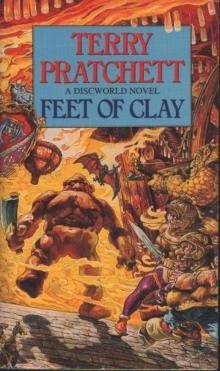 Feet of Clay
Feet of Clay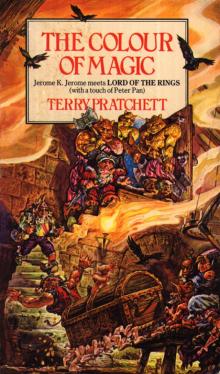 The Color of Magic
The Color of Magic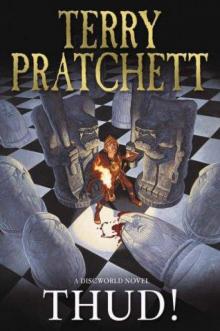 Thud!
Thud! Good Omens: The Nice and Accurate Prophecies of Agnes Nutter, Witch
Good Omens: The Nice and Accurate Prophecies of Agnes Nutter, Witch I Shall Wear Midnight
I Shall Wear Midnight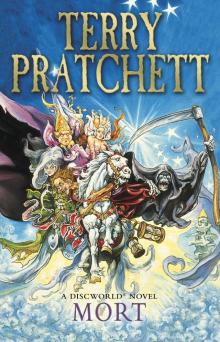 Mort
Mort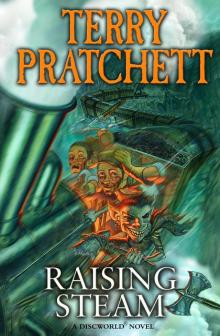 Raising Steam
Raising Steam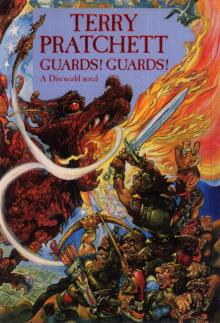 Guards! Guards!
Guards! Guards!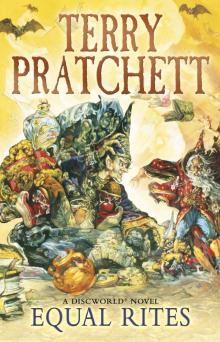 Equal Rites
Equal Rites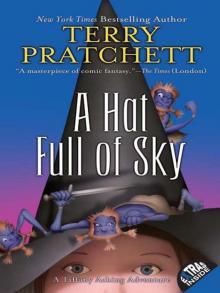 A Hat Full of Sky
A Hat Full of Sky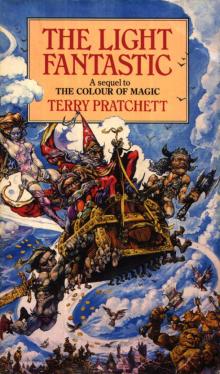 The Light Fantastic
The Light Fantastic Mrs Bradshaw's Handbook
Mrs Bradshaw's Handbook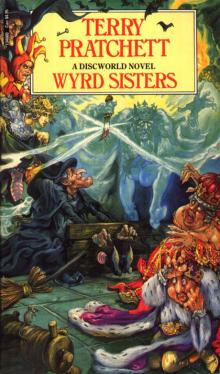 Wyrd Sisters
Wyrd Sisters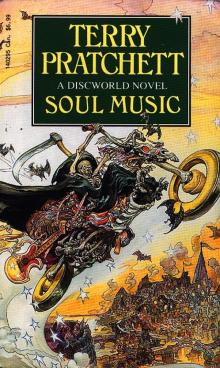 Soul Music
Soul Music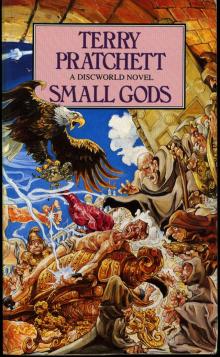 Small Gods
Small Gods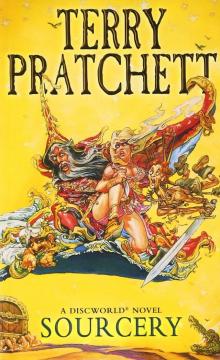 Sourcery
Sourcery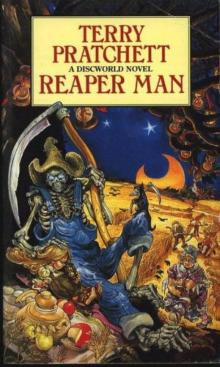 Reaper Man
Reaper Man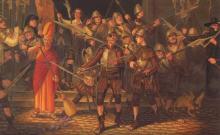 Night Watch
Night Watch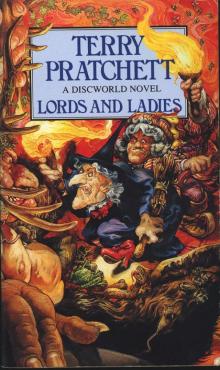 Lords and Ladies
Lords and Ladies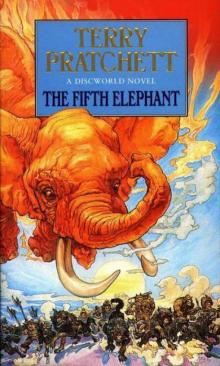 The Fifth Elephant
The Fifth Elephant Monstrous Regiment
Monstrous Regiment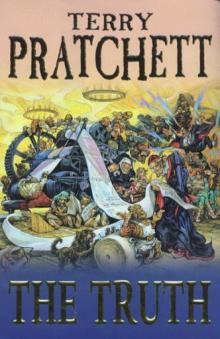 The Truth
The Truth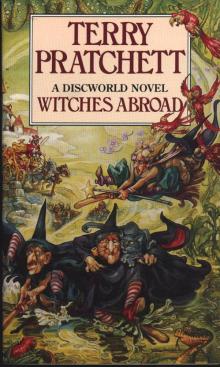 Witches Abroad
Witches Abroad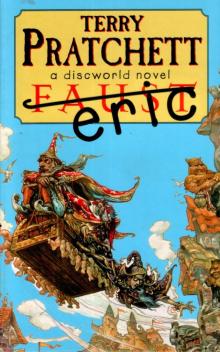 Eric
Eric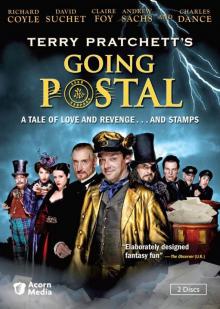 Going Postal
Going Postal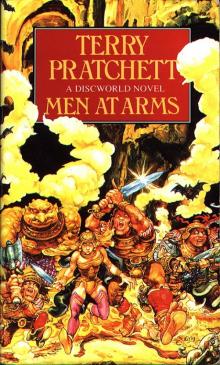 Men at Arms
Men at Arms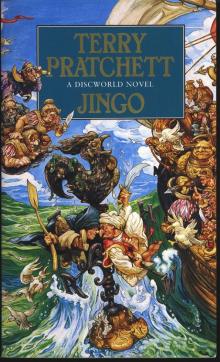 Jingo
Jingo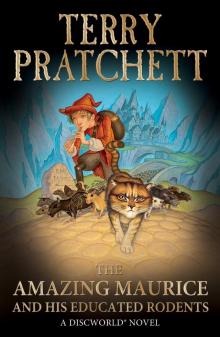 The Amazing Maurice and His Educated Rodents
The Amazing Maurice and His Educated Rodents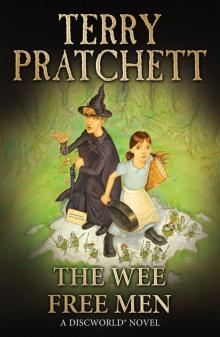 The Wee Free Men
The Wee Free Men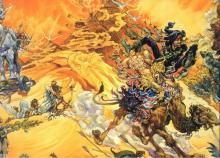 Pyramids
Pyramids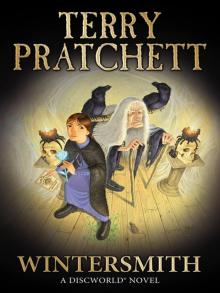 Wintersmith
Wintersmith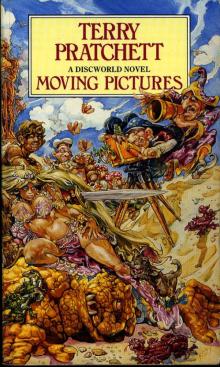 Moving Pictures
Moving Pictures Carpe Jugulum
Carpe Jugulum Interesting Times
Interesting Times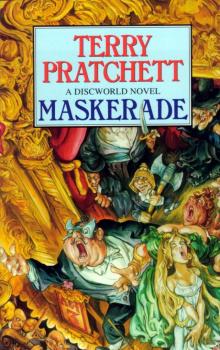 Maskerade
Maskerade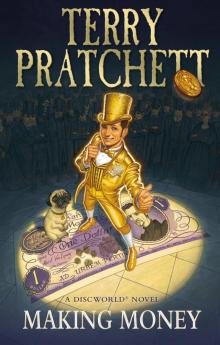 Making Money
Making Money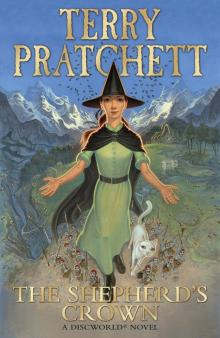 The Shepherd's Crown
The Shepherd's Crown Hogfather
Hogfather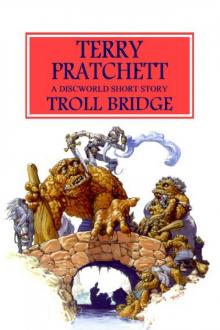 Troll Bridge
Troll Bridge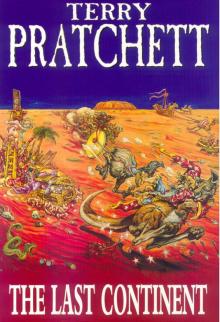 The Last Continent
The Last Continent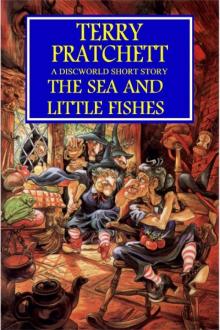 The Sea and Little Fishes
The Sea and Little Fishes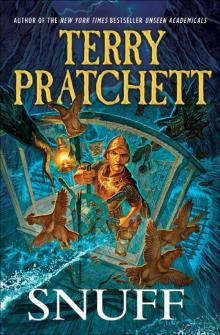 Snuff
Snuff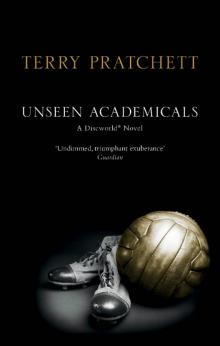 Unseen Academicals
Unseen Academicals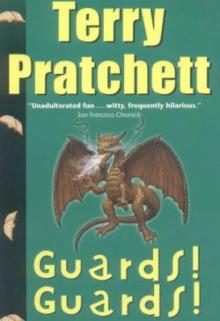 Guards! Guards! tds-8
Guards! Guards! tds-8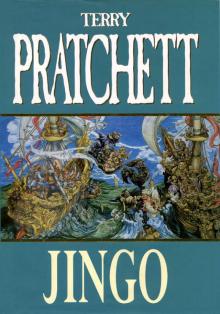 Jingo d-21
Jingo d-21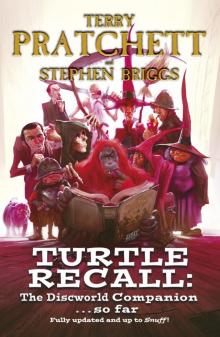 Turtle Recall: The Discworld Companion ... So Far
Turtle Recall: The Discworld Companion ... So Far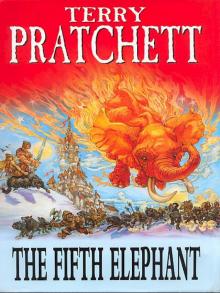 The Fifth Elephant d-24
The Fifth Elephant d-24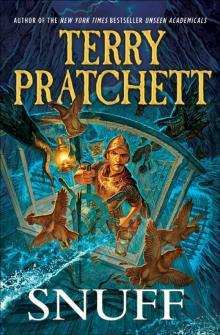 Discworld 39 - Snuff
Discworld 39 - Snuff The Long War
The Long War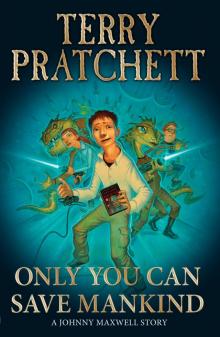 Only You Can Save Mankind
Only You Can Save Mankind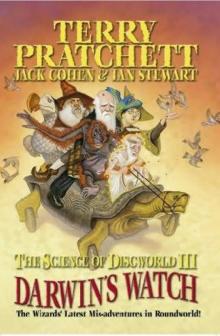 The Science of Discworld III - Darwin's Watch tsod-3
The Science of Discworld III - Darwin's Watch tsod-3 A Blink of the Screen: Collected Short Fiction
A Blink of the Screen: Collected Short Fiction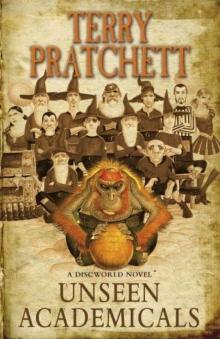 Unseen Academicals d-37
Unseen Academicals d-37 Wings
Wings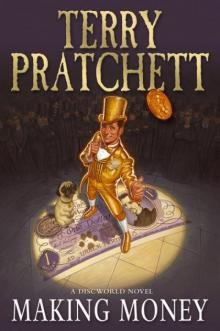 Making Money d-36
Making Money d-36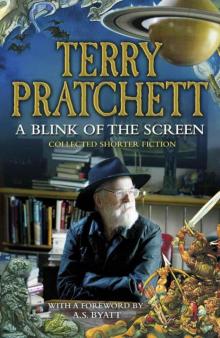 A Blink of the Screen
A Blink of the Screen Johnny and the Bomb
Johnny and the Bomb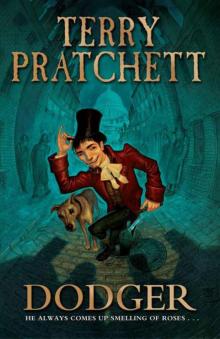 Dodger
Dodger Strata
Strata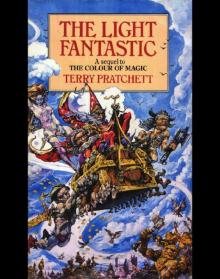 Discworld 02 - The Light Fantastic
Discworld 02 - The Light Fantastic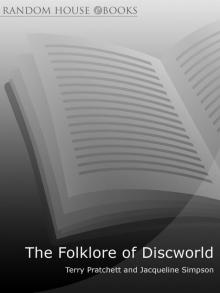 The Folklore of Discworld
The Folklore of Discworld The Science of Discworld
The Science of Discworld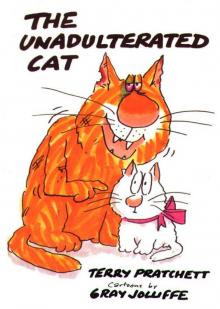 The Unadulterated Cat
The Unadulterated Cat Raising Steam: (Discworld novel 40) (Discworld Novels)
Raising Steam: (Discworld novel 40) (Discworld Novels)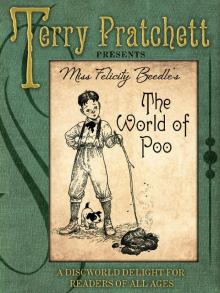 The World of Poo
The World of Poo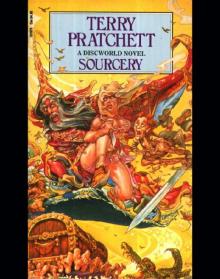 Discworld 05 - Sourcery
Discworld 05 - Sourcery The Witch's Vacuum Cleaner: And Other Stories
The Witch's Vacuum Cleaner: And Other Stories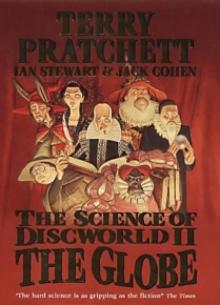 The Science of Discworld II - The Globe tsod-2
The Science of Discworld II - The Globe tsod-2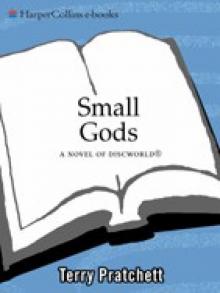 Small Gods: Discworld Novel, A
Small Gods: Discworld Novel, A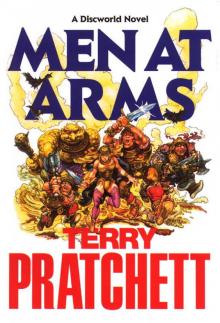 Men at Arms tds-15
Men at Arms tds-15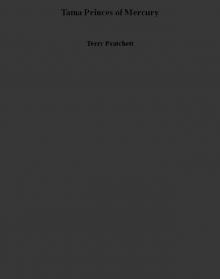 Tama Princes of Mercury
Tama Princes of Mercury The Last Hero (the discworld series)
The Last Hero (the discworld series)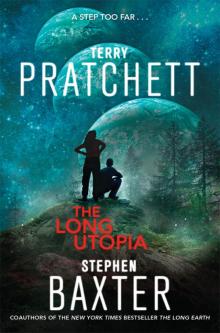 The Long Utopia
The Long Utopia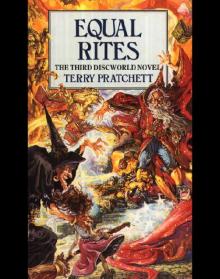 Discworld 03 - Equal Rites
Discworld 03 - Equal Rites Terry Pratchett - The Science of Discworld
Terry Pratchett - The Science of Discworld The Long Earth
The Long Earth The Carpet People
The Carpet People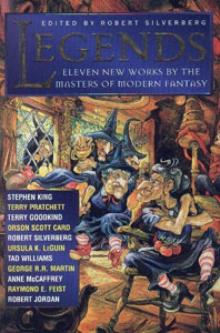 The Sea and Little Fishes (discworld)
The Sea and Little Fishes (discworld)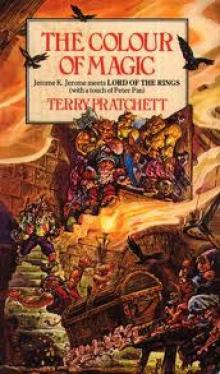 The Colour of Magic
The Colour of Magic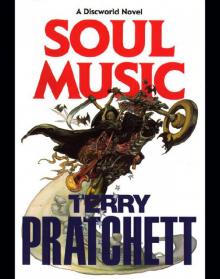 Discworld 16 - Soul Music
Discworld 16 - Soul Music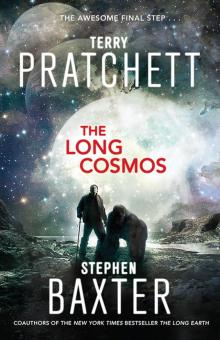 The Long Cosmos
The Long Cosmos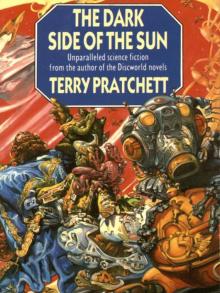 The Dark Side of the Sun
The Dark Side of the Sun Monstrous Regiment tds-28
Monstrous Regiment tds-28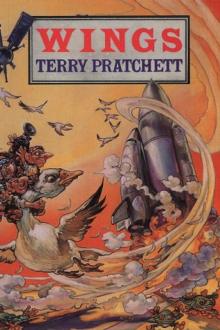 The Bromeliad 3 - Wings
The Bromeliad 3 - Wings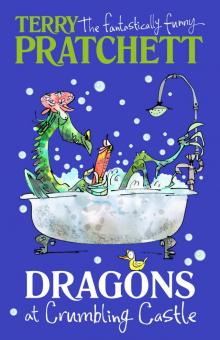 Dragons at Crumbling Castle: And Other Stories
Dragons at Crumbling Castle: And Other Stories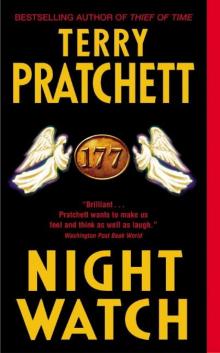 Night Watch tds-27
Night Watch tds-27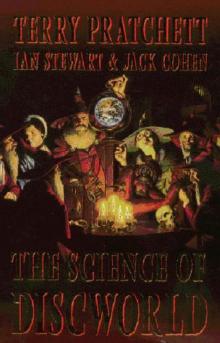 The Science of Discworld I tsod-1
The Science of Discworld I tsod-1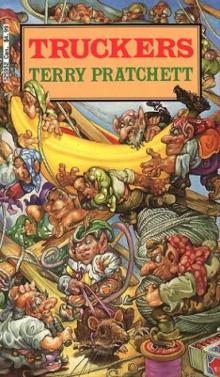 The Bromeliad 1 - Truckers
The Bromeliad 1 - Truckers The Science of Discworld Revised Edition
The Science of Discworld Revised Edition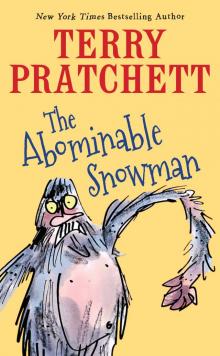 The Abominable Snowman
The Abominable Snowman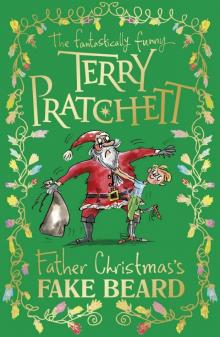 Father Christmas’s Fake Beard
Father Christmas’s Fake Beard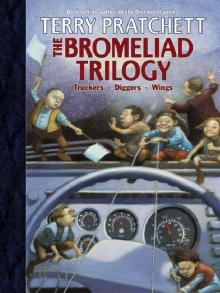 The Bromeliad Trilogy
The Bromeliad Trilogy A Slip of the Keyboard
A Slip of the Keyboard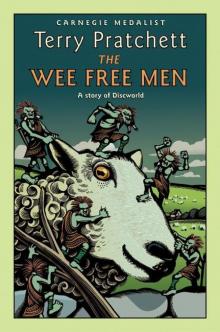 The Wee Free Men d(-2
The Wee Free Men d(-2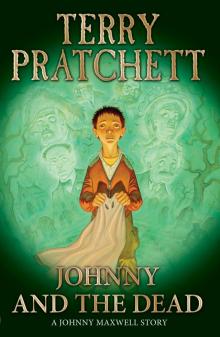 Johnny and the Dead
Johnny and the Dead Mrs Bradshaw's Handbook (Discworld Novels)
Mrs Bradshaw's Handbook (Discworld Novels)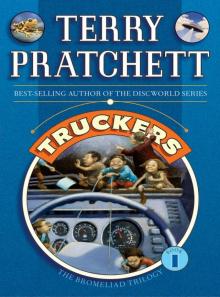 Truckers
Truckers The Amazing Maurice and His Educated Rodents d(-1
The Amazing Maurice and His Educated Rodents d(-1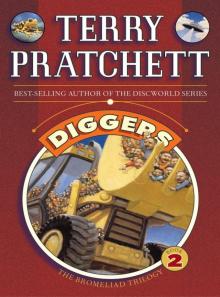 Diggers
Diggers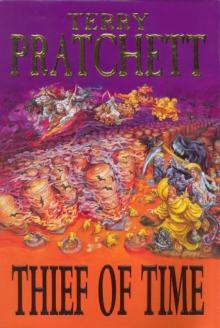 Thief of Time tds-26
Thief of Time tds-26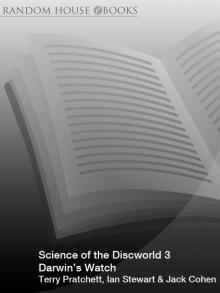 Science of Discworld III
Science of Discworld III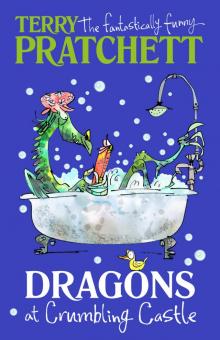 Dragons at Crumbling Castle
Dragons at Crumbling Castle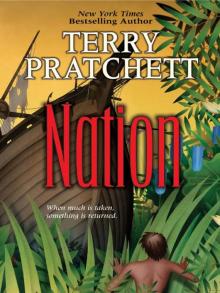 Nation
Nation Darwin's Watch
Darwin's Watch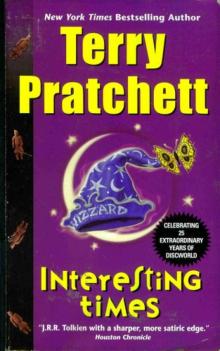 Interesting Times d-17
Interesting Times d-17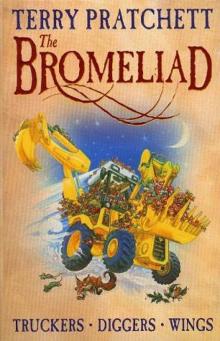 The Bromeliad 2 - Diggers
The Bromeliad 2 - Diggers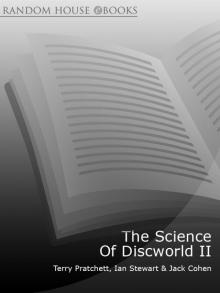 The Science of Discworld II
The Science of Discworld II